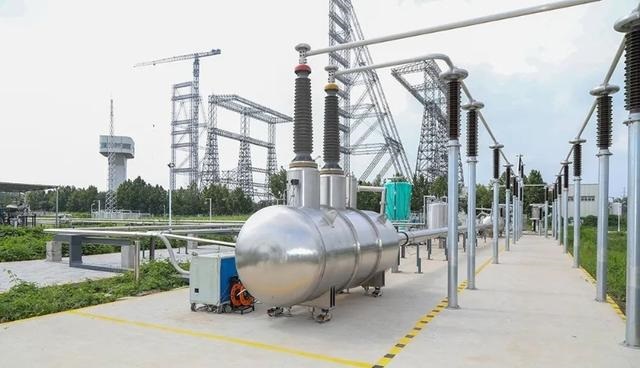Recently, a magical "wire" experiment has succeeded! It can transmit electricity and gas. This kind of cable is called high-temperature superconducting cable.
This cable uses the world's most advanced power and liquefied natural gas (LNG) mixed transmission technology developed by China's leading power and energy storage technology group.
Mixed transmission of electricity and LNG

When transporting liquefied natural gas, it is necessary to perform ultra-low temperature liquefaction treatment on the natural gas first, and the transportation pipeline environment has low temperature and constant conditions. Electricity experts imagine that if this condition is used to transmit electricity in the pipeline at the same time, wouldn't it kill two birds with one stone?
Chinese electric power experts have turned this vision into reality!
"The operating voltage is ±100 kV, the operating current is 1000 amperes, and the LNG transmission flow rate is 100 liters per minute." Recently, at the UHV pole tower test base of the State Grid Corporation of China in Bazhou City, Hebei Province, the world led by the China Electric Power Research Institute The first prototype of a superconducting DC energy pipeline for mixed transmission of electric power and liquefied natural gas (LNG) completed a 24-hour full-load operation test.
Prior to this, the power and LNG mixed transmission technology was still in the conceptual design stage, and the test completed this time is of groundbreaking significance.
"There are no insurmountable obstacles to the engineering application of electric power and LNG mixed transmission." On August 6, Dr. Zhang, CTO of the superconducting project of ZGDK Electric Power and Energy Storage Technology Group, said.
Prior to this project, the highest voltage rating of high-temperature superconducting DC cables in the world was 80 kV in South Korea.
The operating voltage of the system of this project is ±100 kV, which is the highest in the world.
What does a superconducting cable look like?
The superconducting cable system is mainly composed of outer sheath, Dewar tube, liquid nitrogen, superconducting cable core and cryogenic refrigerator. The outer sheath of the superconducting cable system is the same as that of a conventional cable.
Inside the outer sheath is a double-layer stainless steel high-vacuum insulated Dewar tube. Liquid nitrogen flows in the Dewar pipeline. The superconducting cable core is immersed in liquid nitrogen. The low-temperature refrigerator is used as an auxiliary machine of the system to promote the circulation of liquid nitrogen and refrigerate the entire system.
What are the benefits of superconducting cable power transmission?
High-temperature superconducting cables have the characteristics of large current carrying and low loss. Under the same voltage level, the power transmission, current capacity and transmission capacity of superconducting cables can reach 5-10 times that of conventional transmission lines. After considering the power consumption of low-temperature refrigeration systems, the total loss of the system is only about 1/3 of the line loss of conventional lines .
Where is the technical difficulty?
High-temperature superconducting power transmission is difficult to control temperature and ensure operational safety. Superconducting cables need to be in a low temperature environment below minus 196 degrees Celsius (usually using liquid nitrogen as a refrigerant) to work properly.
According to the current performance of low-temperature refrigerators, a refrigeration station is required for a few kilometers.
According to Dr. Zhang, high-temperature superconducting cables cooled by liquid nitrogen have been developed for more than 20 years. However, because the price of superconducting materials is still relatively high, the cost of auxiliary equipment such as refrigeration accounts for a relatively large amount, which restricts the practicality of this technology to a certain extent. The process of transformation.
For energy pipelines, how to ensure the safe and reliable operation of energy pipelines when there are extreme conditions such as grid-side short-circuit, cable insulation breakdown or LNG leakage, is a problem that must be solved, and it is also the focus of everyone's attention in future engineering applications.
Researchers have carried out research on the insulation and safety characteristics of LNG mixed working fluids, and put forward safety response and defense strategies to ensure the safe operation of superconducting energy pipelines.
Broad application prospects
As a clean energy source, natural gas has developed rapidly in recent years. As a brand-new energy configuration and transmission method, the superconducting energy pipeline realizes the integrated transmission of electric power and liquid fuel, and the comprehensive energy transmission efficiency is high.
High-temperature superconducting power transmission projects will have broad application prospects in new power systems, such as offshore wind power transmission, port shore power and other scenarios.

